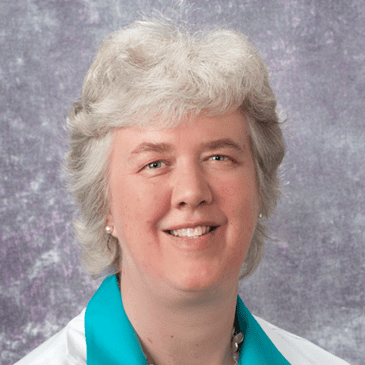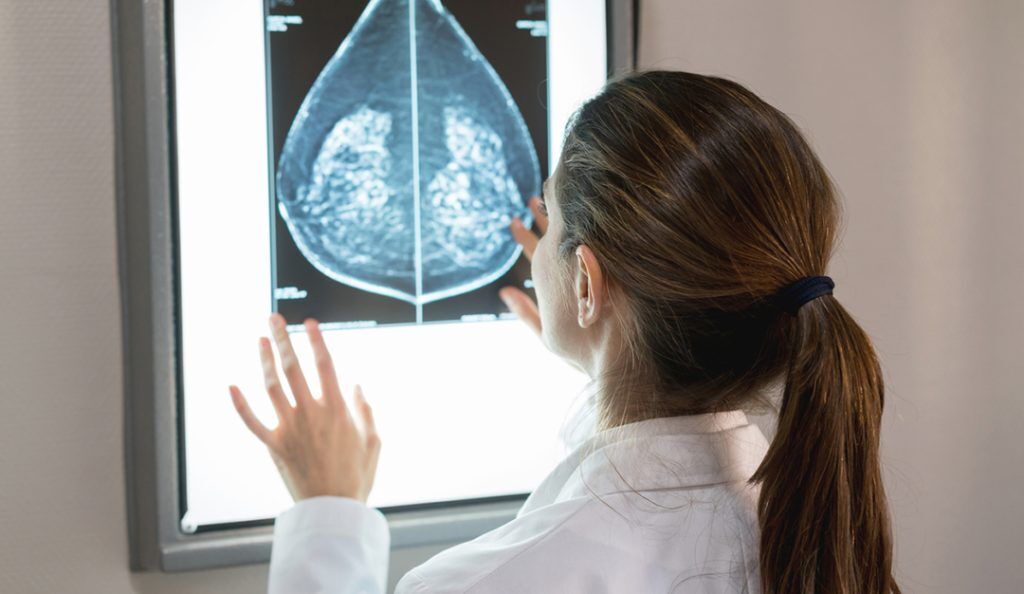BCRF researcher Dr. Wendie Berg outlines what happened to breast screening in the early days of the pandemic—and what is safe now
As the pandemic has stretched on for more than half a year, many women are undoubtedly wondering: Should I go in for my annual mammogram? Is it safe?
Back in March, in the early weeks of the pandemic as emergency rooms were filling with COVID-19 patients and states were starting to issue shelter-in-place orders, women found out their annual breast cancer screenings were canceled or postponed. Experts and consortia issued guidelines indicating it was safe to hold off on a screening mammogram for a couple of months.
RELATED: COVID-19 and Breast Cancer: Resources for Patients During the Coronavirus Crisis
As “a couple of months” has turned into a new normal, recommendations on breast cancer screening have continued to evolve. Recent research indicated a significant decline in breast cancer diagnoses (by as much as 51.8 percent) in the U.S. from March 1 to April 18, causing some experts, including BCRF’s Founding Scientific Director Dr. Larry Norton, to warn of a coming flood of diagnoses, potentially at more advanced stages. BCRF asked Dr. Wendie Berg for a “state of the mammogram” in the time of COVID-19.
In short: It’s safe to get your mammogram now, and if yours was postponed, reschedule it now. Read on for more.
As a refresher, during normal, non-pandemic times, what are the mammogram guidelines for women?
Different organizations have different guidelines. We have a good summary table of guidelines on a website I help with called DenseBreast-info.org.
Most societies recommend starting at age 40. When the American Cancer Society made a new recommendation to start at 45, they were looking at maximizing years of life saved and the strength of the evidence. The U.S. Preventive Services Task Force recommends starting at 50. Much of this comes down to the different methods these organizations follow for analyzing studies and data. The U.S. Preventive Services Task Force, for example, can only use randomized controlled trials, which are all quite old—most from the 1970s—and haven’t used any current technology. They weigh more heavily the stress of being called back for additional testing. I believe women can handle the truth and they just need to know what they’re getting into. Ninety-five percent of women asked to return for extra testing don’t have cancer.
Some organizations will say to stop annual screening at 75, and others say when a person’s life expectancy is fewer than 10 years, because it takes at least that amount of time for a woman to see a benefit from screening statistically speaking. Some differ on whether women should be screened every year or every other year. If you happen to have an aggressive cancer, it’s better that you came every year. It all depends on how you weigh the pluses and minuses in making those decisions with your doctor. Ultimately, I want a woman to advocate for herself.
But, it’s especially important for Black, Asian, and Hispanic women to start getting screened by at least 40, because they are more likely to have breast cancer early. The peak age of incidence for Hispanic and Asian women is actually about 47 compared to about 50 for Black women and late 50s to mid 60s for white women. The message to start screening at least by age 40 in certain populations has not gotten nearly enough attention.
You hear that high-risk individuals should be more aggressive with their screening. Who falls into that category?
The first real use of that term in any major way that I’m aware of was in a 2007 guideline from the American Cancer Society. That initial guideline said if a woman had a known disease-causing mutation or a family history suggesting such a mutation, they were high risk. They also included women who had prior radiation therapy to their chest before age 30 and at least eight years earlier (because of Hodgkin’s lymphoma, for example). The American College of Radiology looked at all the data, and, in 2018, it came out with a new guideline that included women with a personal history of breast cancer who were diagnosed by age 50, as well as women diagnosed later who had dense breasts. These women have a greater incidence of breast cancer, since they’re more likely to have a recurrence, and dense breasts make cancer harder to detect. This has motivated my current research with the Breast Cancer Research Foundation.
Once we identify somebody as being high-risk, they should start screening every year thereafter or by age 25 (whichever is later) and include MRI, with mammography starting by age 30.
What happened with breast cancer screening at the start of the COVID-19 pandemic, and where are we at now?
At the start of the pandemic, we needed to implement new policies and practices in facilities to make them safe. We are up close and personal when we’re doing breast imaging. But in mid-March, we didn’t have enough masks for our technologists. Our facility closed to screening from March 20 to April 24. Some places were longer than that. Others didn’t stop. But there was a big pause at that time.
Obviously, at that time, too, there was concern about overwhelming the health care system. There were at least a couple months where most patients had their surgeries delayed, but doctors were still treating their cancer and keeping it from spreading through endocrine therapy and/or chemotherapy. Most facilities never stopped seeing patients with symptoms. But what really did stop was routine screening.
When our facility closed, we revisited policies and practices and changed our waiting rooms so that patients could be socially distant from others, and we put extensive cleaning protocols in place. Now, most importantly, we have enough masks. Many facilities are also, for example, registering patients in the car or out front, so they don’t come into the building until they need to, and screening for exposure and taking temperatures. At this point, facilities have really made the changes that are needed to be safe. Even as there are COVID-19 spikes, I can’t foresee breast imaging facilities closing down again like before, because they’ve adapted. It’s safe to get your mammogram.
Do you have any advice for women who are still nervous about getting screened?
You’re less likely to have a wait if you’re the first or second appointment in the morning. At that time, you can best avoid people and things are maximally clean. If you are still really nervous about visiting a hospital, you might go to an outpatient center. The most important thing you can do to stay safe, no matter what, is to wear your mask and fully cover your mouth and nose the entire appointment.
What should you do if you had your mammogram postponed?
Patients should reschedule now. You don’t want to delay a diagnosis of breast cancer. The whole benefit to screening is early detection—preferably before it spreads to the lymph nodes, and so that treatment is less involved. Get in there and get it done.
COVID-19 is going to be with us for a while no matter what. There was a reason to be cautious in March, and surgery may still be delayed in some places that are seeing higher COVID-19 rates now, but hospitals and facilities in most places are well prepared and safe.
This interview has been edited and condensed. For more COVID-19 resources, click here.






